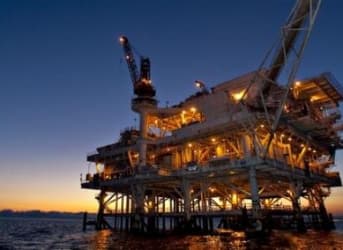Oil market analysts keep a close watch on the weekly and monthly production figures from the U.S. EIA, watching for a sign that a contraction in output will help to balance global supply and demand.
There are a few reasons why so much attention is paid to the U.S., rather than other places around the world. First, the U.S. has consistent and reliable data, unlike a lot of other places, which makes analysis easier. Second, the U.S. is the principle culprit behind the collapse in oil prices, as its rapid run up in production pushed supplies well beyond demand. Third, U.S. shale, the source of the recent uptick in supply, rises and falls much more quickly than conventional oil fields, especially large-scale projects such as deep offshore.
Still, it is useful to pay attention to supply changes from outside the U.S. For example, in its November report, OPEC raises a few red flags on Brazil, where a deteriorating economy, a simmering corruption scandal, and a major pullback in the state-owned oil firm Petrobras, could all conspire to cut into Brazil’s oil output. Related: Saudis Planning For A War Of Attrition In Europe With Russia’s Oil Industry
Brazil’s inflation has jumped to its highest level since 2003, running over 10 percent according to the latest figures. The central bank hiked interest rates to 14.25 percent, the highest in nine years to combat inflation, but so far it has been unsuccessful. Meanwhile, GDP is shrinking, with an expected contraction of 2.2 percent in 2015. And the unemployment rate has hit 7.6 percent, the highest since 2010.
Brazil is expected to increase oil production by 180,000 barrels per day in 2015, hitting 3.04 million barrels per day (mb/d). But 2016 is a different story. Petrobras has been embroiled in a corruption scandal since last year, which has cost the company tens of billions of dollars. Given that Petrobras was already the most indebted oil company in the world, major cut backs in spending were in order.
OPEC sees Brazilian oil production plateauing as soon as next year. That is a pretty significant development considering the fact that, not too long ago, Petrobras thought output would continue rising rapidly through the rest of the decade. But Petrobras is slashing investment in its mature oil-producing assets in the Campos Basin, where much of Brazil’s output comes from. These large fields have steep decline rates, and the losses are starting to show up in the data. OPEC cites the Marlin field, a field that produced 240,000 barrels per day in 2014, but suffered a staggering decline in output this year, dropping 30 percent (although some of that is due to maintenance). Several other significant fields, including Roncador in the Campos Basin, have also posted declines recently, even though, again, Petrobras attributes the slump to maintenance. Related: Korea Leading The Way With Ambitious Fuel Cell Project

The significant slowdown in capital investment on behalf of Petrobras means that the depletion from maturing fields could at some point overwhelm new production. Brazil increased production this year, but that was because it still had a backlog of new projects coming online. But the project pipeline is drying up. “[D]ue to few Brazilian projects coming online in 2016, remarkable growth is not foreseen,” OPEC concluded in its latest report. Related: OPEC’s Strategy Is Working According To Cartel’s Latest Report
The strike of oil workers in early November impacted at least 450,000 barrels per day of production. Unions are upset about Petrobras’ planned asset sales, which they see as a backdoor move at privatization. Petrobras, desperate to slash its debt burden, sees asset sales as a necessary evil. The work stoppage impacted output at 50 oil platforms. The two sides recently reached an agreement on November 13 to end the strike, which will include a pay raise of 9.53 percent, and the company will also produce a report within 60 days that studies alternatives to cuts in investment. However, it is unclear how Petrobras can turn around its debt situation while still satisfying worker demands to resist spending cuts.
That puts Brazil’s oil future in serious doubt. For years, Brazil and Petrobras hailed the country’s pre-salt fields as a ticket to its elevation on the global stage. To be sure, pre-salt production is slowly ticking upwards. But pre-salt oil fields will only breakeven at $55 per barrel, according to OPEC, despite Petrobras assurances that it can be profitably produced at $45 per barrel. “Some of its most important and highest producing fields may be operating at a loss,” OPEC concluded.
By Nick Cunningham of Oilprice.com
More Top Reads From Oilprice.com:
- Oil Tankers Are Filling Up As Global Storage Space Runs Low
- Oil Market Supply Imbalance Getting Worse, Not Better
- IEA Offers No Hope For An Oil-Price Recovery


















